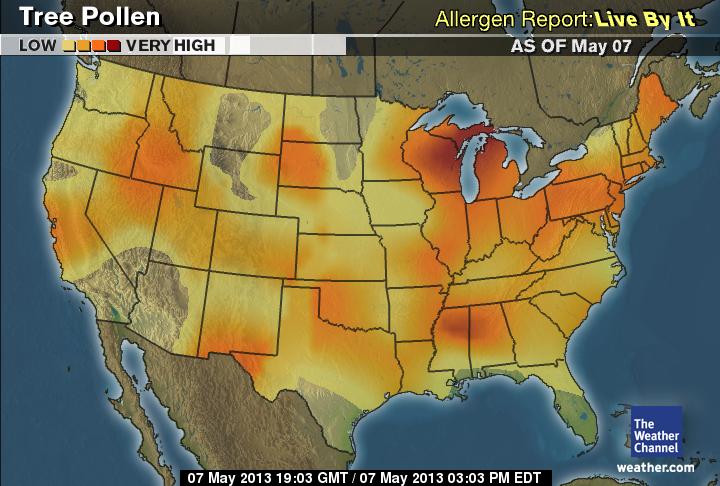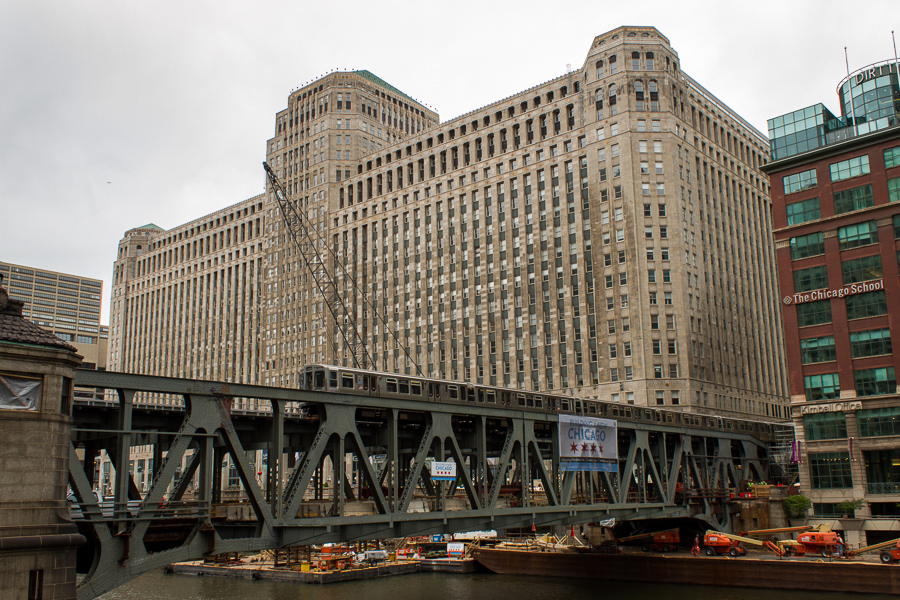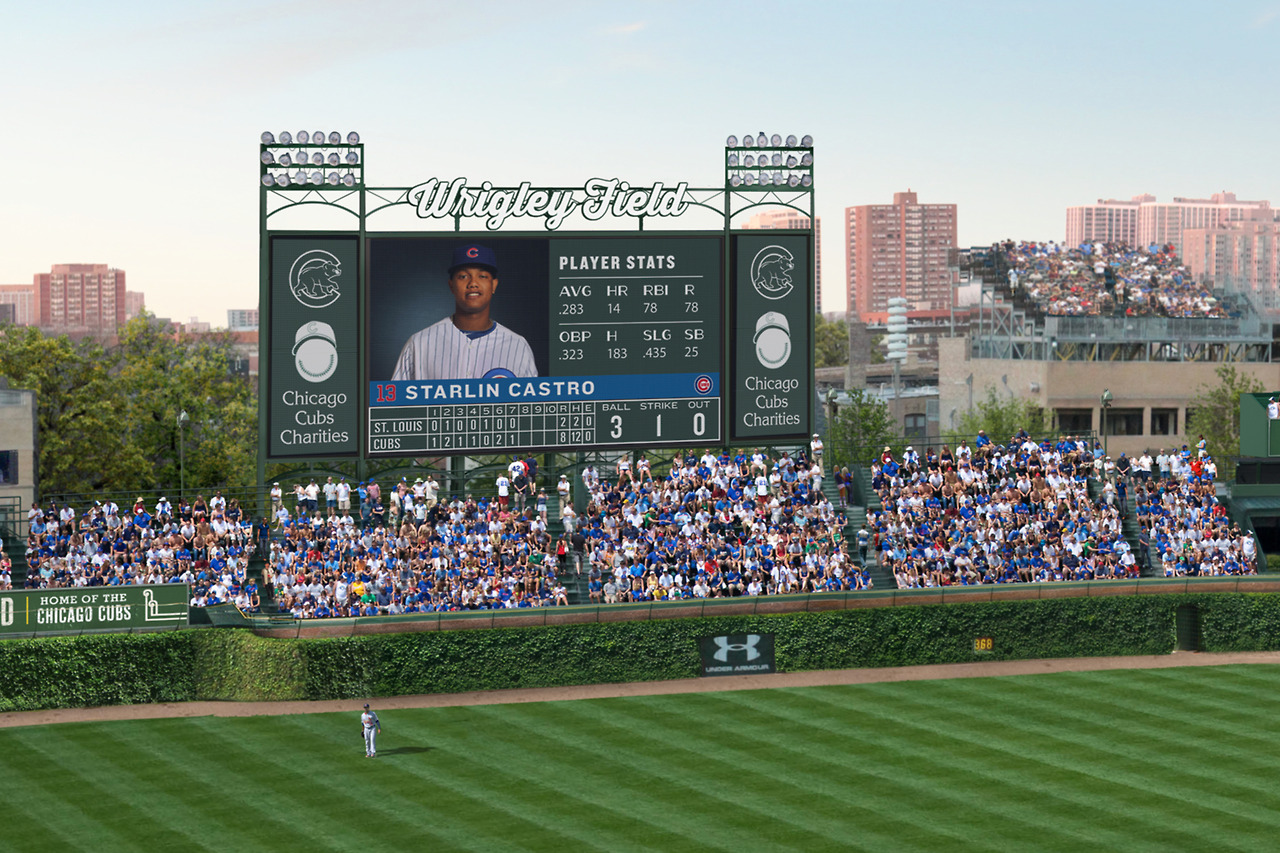Less than two weeks ago, southern Minnesota had 25 cm of snow on the ground. Yesterday, the region hit 40°C following the biggest two-day temperature swing in decades:
Even more dramatic were the stunning weather changes which occurred to Chicago's west Tuesday. Soaring temperatures smashed records from Nebraska into western Iowa, Minnesota and western Wisconsin—areas which less than 2 weeks earlier had been crippled by a record-breaking foot or more of late-season snow.
Albert Lea, Minnesota recorded a 38°C high Tuesday. Only 12 days earlier that city had been buried under a 250 mm accumulation of snow.
Iowa's state climatologist Harry Hillaker reported in a special weather statement out of the National Weather Service Forecast Office in Des Moines Tuesday that 38°C or higher temperatures have occurred in the month of May on only 11 occasions since official weather records began in the state in 1873. Even rarer have been 38°C readings two weeks after a major snowstorm. Hillaker reports this has happened only a few times over that period.
Here in Chicago, O'Hare hit 33°C and Midway hit 32°C, while at Inner Drive Technology World Headquarters—800 m from Lake Michigan—the temperature hovered around 21°C until the sun went down. Without the sun heating the city, the lake breeze stopped, and temperatures rose. Sitting at Wrigley Field last night, I had my sweater on in the first two innings and was down to a T-shirt by the 6th.
Today's forecast calls for rapidly dropping temperatures bottoming out around 14°C by 4pm.
Welcome to 400 ppm CO2, folks. With more energy in the atmosphere, continental climates like the Midwest U.S. will have these violent temperature changes pretty normally from now on.
Chicago Tribune op-ed writer Marty Sandberg thinks so:
Ricketts has done one thing successfully — creating the most apathetic, undemanding fan base possible. Over the past few years third-generation die-hards have quietly been returning their season tickets. The knowledgeable, fun and sometimes offensive regulars that used to pack the park and make game day such a raucously enjoyable experience have disappeared. In their place, we find a ballpark full of expense-account-toting managers, teenage girls posting self-portraits on Facebook and a few drunken college bros confused by the ramp system. And let's not forget the legions of first-timers still traveling to Wrigley from out of state, somewhat disappointed by the lethargic atmosphere they encounter. But don't worry about them — they'll stop coming soon, too.
Ricketts loves to repeat that he "just wants to run his business like a business," because he "bought a private business, not a museum." Spare us the act, Tom. When you purchased a community institution like the Cubs, you were never naive enough to think you were buying an Al's Beef franchise. The Cubs have thrived for generations because of devoted fans. Professional sports is a give-and-take relationship — Ricketts can't expect to get whatever he wants without repercussions, simply because he bangs his spoon on the table loud enough.
Does Wrigley need a little face-lift? Most definitely. But the proposed alterations to Wrigley go beyond what is necessary or even tolerable. They discard the very atmosphere the Cubs spend so much time promoting. The renovations gut the soul of a stadium that has survived so long because of its character, not in spite of it.
I've been to 24 ballparks, including Fenway and the old Yankee Stadium, and on that basis I agree with Sandberg on the value of Wrigley Field. I don't agree entirely that one or two upgrades to Wrigley would kill its character. Jumbo-Tron in Left Field? Meh, as long as it's not too big. The old scoreboard will stay there above the bleachers, right? How about a hotel across Clark St.? Almost anything would improve the current situation of a temporary sports clothing store and a McDonald's.
He's right that the Cubs need to start winning games again. They've been in last place since April 16th, and just lost their 22nd game (out of 35) yesterday.
Maybe Tom Ricketts will surprise everyone and invest in the Cubs. I don't believe Ricketts would abandon or destroy the biggest asset the organization has. We'll see, though. It's already been 104 years; what are a few more?
Just about an hour ago, crews lowered the last piece onto the 124 m spire topping One World Trade Center, making it the tallest building in the hemisphere:
The 18-piece silver spire will top out the tower at a symbolic 1,776 feet (541 m), a nod to the year America signed the Declaration of Independence. The new building is just north of the original towers, now the hallowed ground known as Ground Zero.
"This really is a symbolic moment because this building really represents the resiliency of this country," Port Authority Vice Chair Scott Rechler told [NBC's] Matt Lauer, who earlier had made his way up the 104 floors to witness the process. "These people, the thousand men and women who have worked here tirelessly, really as a tribute for the people that perished on 9-11 right on this site."
This also bumps Chicago to second place. Until this morning, the 442 m Willis Tower was the tallest building in the U.S., and had been for 40 years.
The Chicago City Council could ratify a proposal allowing 46 night games as early as next month:
The proposal also would permit the Cubs to host four concerts and to make changes to its schedule as soon as next month. It allows for six Friday afternoon games starting at 3:05 instead of the traditional 1:20. The Cubs would like to move back some Friday afternoon games this season if the City Council approves the night-game plan.
The changes are consistent with a tentative agreement struck last month involving Emanuel, Tunney and the Cubs. The introduction of the night-game ordinance is the first legislative step in a process to renovate historic Wrigley Field.
Cubs' ownership has proposed spending $500 million to make extensive renovations to the ballpark and develop surrounding property in the North Side neighborhood. But before the Ricketts family, owners of the team and Wrigley Field, makes the financial commitment, it asked the city to ease regulations that limit night games and advertising signage in the ballpark. The family says more night games and signage would allow the team to generate more revenue that would be used to pay for the park restoration and field a more competitive team.
I would, of course, go to more games if the ordinance passes. I used to live three blocks from Wrigley, though, so I understand the deleterious effects more night games could have on the neighborhood. Still, if Ricketts' improvements actually help the Cubs win games, I'm in.
The Tribune reports this morning that some groundskeeping duties at O'Hare will soon get turned over to a herd of goats:
The city's Department of Aviation is expected to announce Wednesday that it has awarded a contract to Central Commissary Holdings LLC — operator of Lincoln Park restaurant Butcher & The Burger — to bring about 25 goats onto airport property, helping the airport launch its pilot vegetation-management program.
Joseph Arnold, partner at Butcher & The Burger, said the goats now live on a farm in Barrington Hills and will make "the perfect lawn mowers" for the city's largest airport.
In about a month, Arnold said, the goats will be delivered to O'Hare and begin their task of munching away at overgrown greenery. According to the city's request for bids last fall, the animals will be expected to clear about 23 square meters of vegetation per day.
Apparently the goats can go up and down embankments a lot easier than the lawnmowers they currently use.
Time to drop by Butcher & the Burger.
Pollen levels in Chicago have exploded in the past week:
The area’s pollen values surged Tuesday to the highest levels of the year, the latest development in a allergy season which has brought misery to many across the Chicago area. Dr. Joseph Leija, allergist at Loyola Gottlieb Memorial Hospital and provider of this area’s pollen counts, lamented in his daily report that the slow pace of spring warming has combined with the season’s huge rain tallies to bring high tree counts at the same time high grass and weed levels are present. The result, says Dr. Leija, has been to make allergy sufferers miserable despite the lovely weather of late. Swollen and itchy eyes were among the reasons many patients visited his office as well as the need for medication adjustments
Tree, grass and weed pollen were ALL reported as “high” Tuesday. Tree pollen reached 1,000 grains per cubic yard—just 500 below the “alert level” of 1,500.
This is just tree pollen; the mold, grass, and ragweed maps have pretty colors over Illinois also:

I've been sneezing and coughing for three days now. I'm really looking forward to the plants finishing up their orgy of...well, orgies.
Over the past week, the city replaced the north leaf of the Wells St. Bridge. This morning it looked like this:

Previous coverage here.
Since its purchase by InBev (Anheuser Busch) two years ago, Goose Island Brewing Co. has increased production significantly by brewing beer in other states. While this does allow them to produce more beer and to sell it nationwide, it has also changed the beer. Green Line Pale Ale now comes from Baldwinsville, N.Y., which I'm pretty sure doesn't have an El. Flagship 312 Urban Wheat Ale comes from Baldwinsville (area code 315) and Fort Collins, Colo. (area code 970). Since water is the principal ingredient of beer, I wonder how this could fail to change the formula.
Goose Island CEO Andrew Goler says it doesn't:
“Anheuser-Busch is letting us do our own thing,” says [Goeler], who took over as Goose Island's CEO on Jan. 1, replacing founder John Hall. “I'm not getting directives.”
When Belgium's Anheuser-Busch InBev swallowed Goose Island for $38.8 million in 2011, it provided a relief valve for an overwhelmed brewing facility. (The companies were intertwined in 2006 when Goose Island signed a distribution deal with Anheuser-Busch.)
Moving production for three of Goose Island's most popular beers out of Chicago, a decision that enthusiasts worried was the beginning of the end for the craft brand, solved a long-standing problem of pent-up demand. Top sellers are now brewed at Anheuser-Busch InBev facilities in Fort Collins, Colo., and Baldwinsville, N.Y., an expansion that allows Goose Island bottles to be carried in all 50 states.
"I think there were some irrational doubts about what's going to happen to Goose Island," says Greg Hall, 47, Goose Island's former brewmaster and son of its founder. "It's not like they're trying to make India Pale Ale and Bud Light comes out."
No, but it's no longer the same IPA, either.
Large corporations tend to digest smaller acquisitions. And Goose Island is no longer part of the Craft Brewers Association, because it's no longer a craft brew. We'll see how long Goose Island retains its independence.
I find it fascinating when someone whose entire brand rests on its association with a particular place makes this kind of threat:
"I'm not sure how anyone is going to stop the signs in the outfield," Ricketts said upon the unveiling of drawings of his renovation plan, "but if it comes to the point that we don't have the ability to do what we need to do in our outfield then we're going to have to consider moving."
Ah, yeah. "Consider" moving. Tribune columnist Steve Rosenbloom scoffs:
Look, if you’re going to play the move card, then play it like you mean it. Ricketts didn’t. He came off like a guy who wanted nothing to do with those words in any order. It was done so weakly, in fact, that I’m surprised there wasn’t closed-captioning.
I can see how people got the wrong idea, though. Supporters were thrilled to have Ricketts hint even slightly that he knew how to play politics. Nope. Sorry. Not happening.
The only place anyone might believe Ricketts could move the Cubs today is Mr. Rogers’ neighborhood.
Meanwhile, the Cubs actually won last night, putting them only three games behind the 4th-place team. We can't even give our tickets away at this point.
Crain's has details this morning about what Ricketts wants to build at Wrigley:
Two weeks after the Cubs and city officials announced a "framework agreement" on a $500 million renovation of Wrigley Field and development of its surrounding property, the team has released images of its plans, which include a 6,000-square-foot jumbotron in left field and a horizontal 1,000-square-foot advertising sign in right field as the framework outlined last month.
With the images now complete (you can see them below and on Crain's Tumblr page here), the Cubs later today will formally file their planned development application with the city's Plan Commission, the first step in what could be a months-long public process to get approval for the entire project.
The huge Jumbotron in left field (below) probably won't happen exactly as Ricketts wants; the other stuff, including the hotel across Clark Street, probably will.
